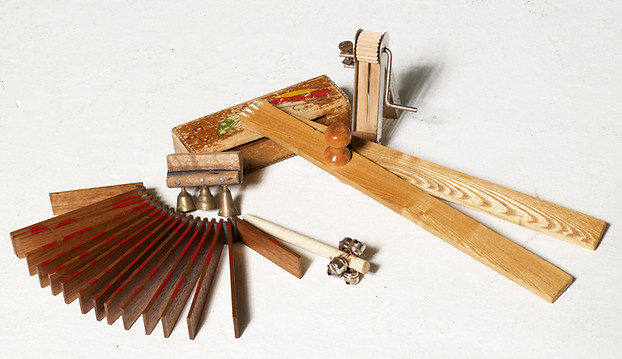

INSTRUMENTS
A typical Russian folk orchestra will usually feature the Domra, Balalaika, Bayan, Zhaleika, various other woodwind instruments and percussion.
Below is a snapshot of the instruments played by the Sydney Balalaika Orchestra.

DOMRA FAMILY
The domra family includes the prima domra, alto domra, tenor domra and bass domra. All have oval faces and rounded backs. These instruments come in three or four-stringed types. Members of the three-stringed domra family are tuned in fourths (E, A, D) and all four-stringed domras are tuned in fifths (G, D, A, E, like the violin).
The domra is played with a plectrum (pick).


BALALAIKA FAMILY

The balalaika family also consists of the prima balalaika, secunda balalaika, alto balalaika, bass balalaika, plus the mighty contrabass balalaika. Each of these is a three-stringed instrument.
Due to a lack of balalaika players in Sydney, only two types of balalaika are played within the orchestra: the prima balalaika and two contrabass balalaikas.


Prima Balalaika
Contrabass Balalaika

This photo shows, on the left, a typical five-row, 120-bass bayan. On the right is an accordion. Both instruments are used in the orchestra.
The bayan (named after a legendary Russian folk singer) is a Russian version of the accordion, created at the end of 19th century. Most bayan players consider this instrument to be more flexible, with rows of buttons on both the left and right-hand side allowing complex passages to be played with greater ease.
BAYAN/ACCORDION


Cimbalom
The cimbalom is a form of dulcimer commonly found in the group of Central-Eastern European nations, such as Hungary, Romania, Slovakia, Ukraine and Belarus.
Its 76 strings are either plucked or struck with leather-covered hammers held in the player’s hands. The pictured cimbalom was brought to Australia from Belarus.


Various percussion instruments are employed by the orchestra’s percussionist: glockenspiel, auto harp, wood block, bells, whistles, snare drum, cymbal and more.
Clarinets, flutes and guitars are also used in the orchestra, as well as a single zhaleika as shown below.
PERCUSSION

Zhaleikas come in two varieties, single and double. The single zhaleika is a small tube of willow or elder of between 10 to 20 cm in length. One end is fitted with cow horn and the other with a single reed. The tubular body contains 3 to 7 holes, allowing the player to change the pitch. The diatonic range depends on the number of holes. The timbre of the zhaleika is nasal and forlorn.
Although it is now seen mostly in orchestras of Russian folk instruments, the use of the zhaleika was once widespread in Russia, Belarus and Ukraine.



